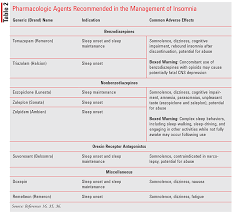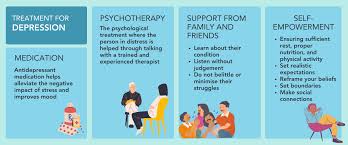Insomnia in the Elderly: Understanding and Treatment
Insomnia, a common sleep disorder, can be particularly challenging for the elderly population. As we age, changes in sleep patterns and health conditions can contribute to difficulty falling asleep or staying asleep. Insomnia not only affects the quality of life but also has implications for overall health and well-being.
Causes of Insomnia in the Elderly
There are various factors that can contribute to insomnia in older adults:
- Changes in sleep architecture
- Medical conditions such as arthritis, heart disease, or dementia
- Mental health issues like depression or anxiety
- Medications that may interfere with sleep
- Lifestyle factors such as irregular sleep schedules or poor sleep hygiene
Treatment Options for Insomnia in the Elderly
When addressing insomnia in the elderly, it is important to consider a comprehensive approach that may include:
- Sleep Hygiene: Encouraging good sleep habits such as maintaining a regular bedtime routine and creating a comfortable sleep environment.
- Cognitive Behavioral Therapy for Insomnia (CBT-I): A structured program that helps individuals identify and change negative thoughts and behaviors related to sleep.
- Medication Management: In some cases, healthcare providers may prescribe medications to help manage insomnia symptoms. It is important to use these under medical supervision due to potential side effects.
- Complementary Therapies: Techniques such as relaxation exercises, meditation, or acupuncture may help promote better sleep quality.
- Treating Underlying Conditions: Addressing any medical or mental health conditions that may be contributing to insomnia can also be crucial in treatment.
Consulting a Healthcare Provider
If you or a loved one is experiencing persistent insomnia, it is essential to consult with a healthcare provider. They can conduct a thorough evaluation, identify underlying causes, and recommend an appropriate treatment plan tailored to individual needs.
By addressing insomnia effectively in the elderly population, we can improve their quality of life, promote better health outcomes, and enhance overall well-being.
5 Effective Strategies for Managing Insomnia in the Elderly
- Establish a regular sleep schedule and bedtime routine.
- Create a comfortable and relaxing sleep environment.
- Limit daytime naps to improve nighttime sleep quality.
- Engage in regular physical activity, but avoid strenuous exercise close to bedtime.
- Consider cognitive behavioral therapy for insomnia (CBT-I) as a treatment option.
Establish a regular sleep schedule and bedtime routine.
Establishing a regular sleep schedule and bedtime routine is a key tip in the treatment of insomnia in the elderly. By going to bed and waking up at the same time each day, seniors can help regulate their internal body clock and improve the quality of their sleep. A consistent bedtime routine, such as engaging in relaxing activities before bed and creating a calm sleep environment, can signal to the body that it is time to wind down and prepare for rest. These practices can promote better sleep patterns and contribute to overall well-being for older adults struggling with insomnia.
Create a comfortable and relaxing sleep environment.
Creating a comfortable and relaxing sleep environment is a crucial tip in the treatment of insomnia in the elderly. By ensuring that the bedroom is conducive to restful sleep, with factors such as a comfortable mattress, appropriate room temperature, minimal noise and light disturbances, and calming bedtime routines, seniors can enhance their chances of falling asleep and staying asleep throughout the night. A peaceful sleep environment can promote relaxation, reduce anxiety, and improve overall sleep quality for better health and well-being.
Limit daytime naps to improve nighttime sleep quality.
Limiting daytime naps can be a beneficial strategy to improve nighttime sleep quality in the elderly. While napping during the day may provide a short-term energy boost, excessive or prolonged naps can disrupt the natural sleep-wake cycle and make it harder to fall asleep at night. By reducing the duration and frequency of daytime naps, older adults can increase their chances of experiencing more restful and consolidated sleep during the night, leading to better overall sleep quality and improved well-being.
Engage in regular physical activity, but avoid strenuous exercise close to bedtime.
Engaging in regular physical activity is a beneficial way to promote better sleep quality in the elderly. However, it is important to avoid strenuous exercise close to bedtime as it can stimulate the body and mind, making it harder to fall asleep. Incorporating moderate exercise earlier in the day can help regulate sleep patterns and improve overall health without interfering with the ability to relax and unwind before bedtime. By maintaining a consistent exercise routine and being mindful of timing, seniors can support their efforts to combat insomnia and enjoy more restful nights.
Consider cognitive behavioral therapy for insomnia (CBT-I) as a treatment option.
Consider cognitive behavioral therapy for insomnia (CBT-I) as a valuable treatment option for addressing insomnia in the elderly. CBT-I is a structured program that focuses on changing negative thoughts and behaviors related to sleep, helping individuals develop healthier sleep patterns and improve their overall quality of sleep. By targeting the root causes of insomnia through CBT-I, older adults can experience lasting improvements in their sleep quality and well-being, ultimately enhancing their overall health outcomes.




